Incarceration is not an equal opportunity punishment
by Peter Wagner
Updated August 28, 2012
At the end of 2010, there were 2,266,800 people in U.S. prisons and jails. For the second year in a row, the total prison population fell slightly, although some states and the federal system continued to increase the number of people incarcerated.
As of June 30, 2010, the U.S. incarceration rate was 732 per 100,000 residents. But when you break down the statistics you see that incarceration is not an equal opportunity punishment. The graphs that follow illustrate that the young, the male, the Black and the Latino are disproportionately incarcerated. Put those factors together and you have almost 9% of Black men in their late 20s behind bars.
By race and ethnicity:
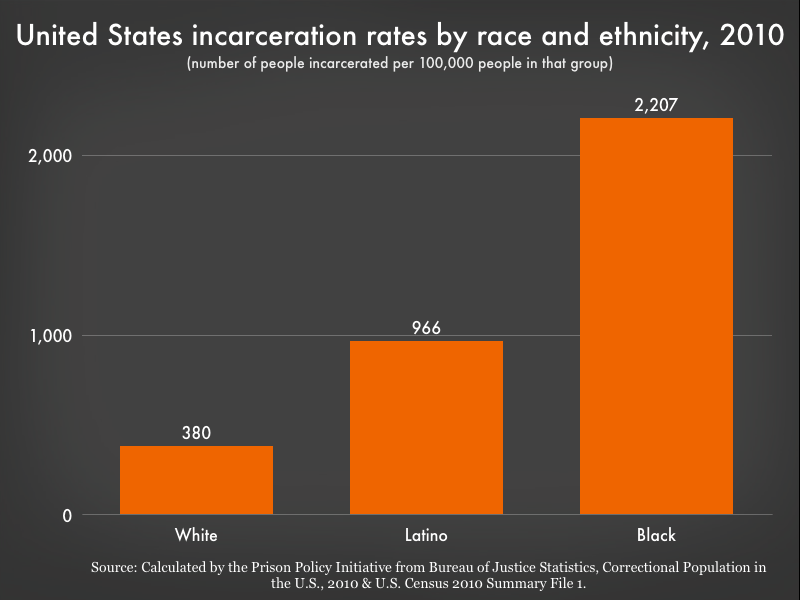
By sex:
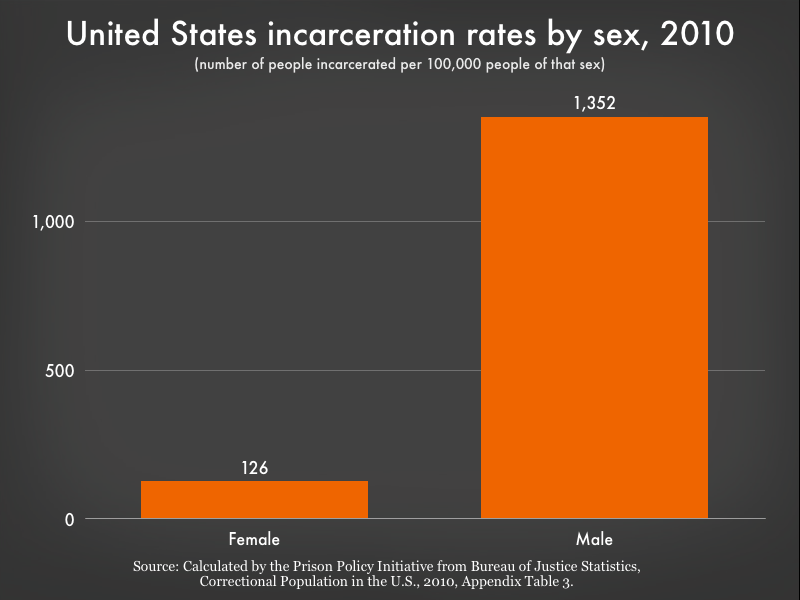
By race and gender, the numbers for Blacks and Latinos skyrocket:
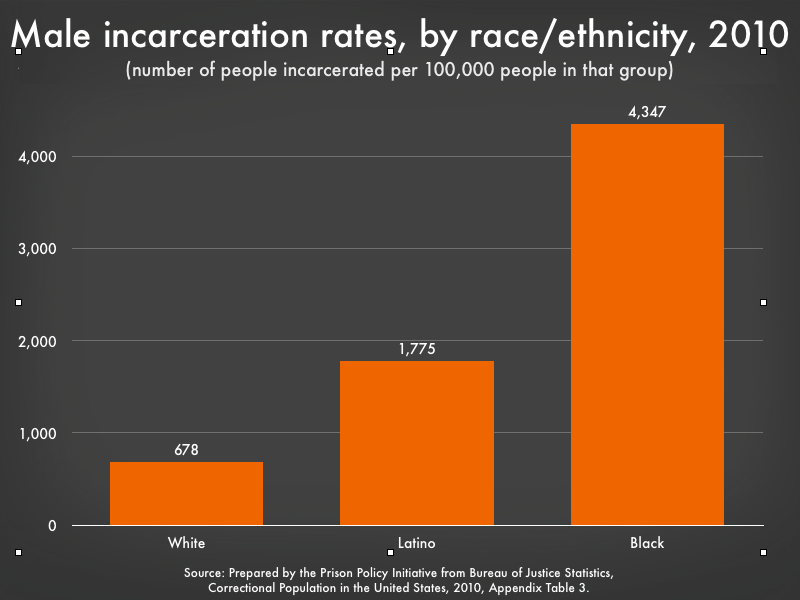
Almost 9% of Blacks in their late 20s — and almost 4% of Latinos of that age — are incarcerated:
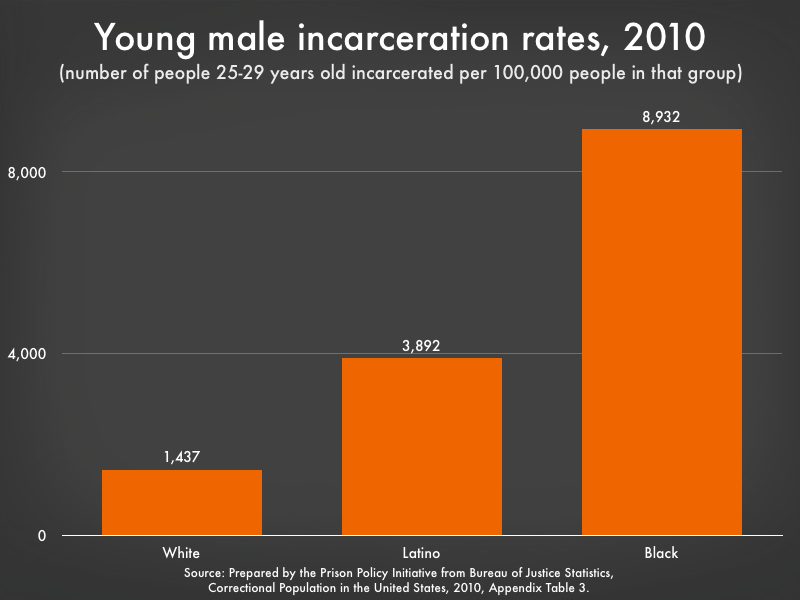
Globally unprecedented:
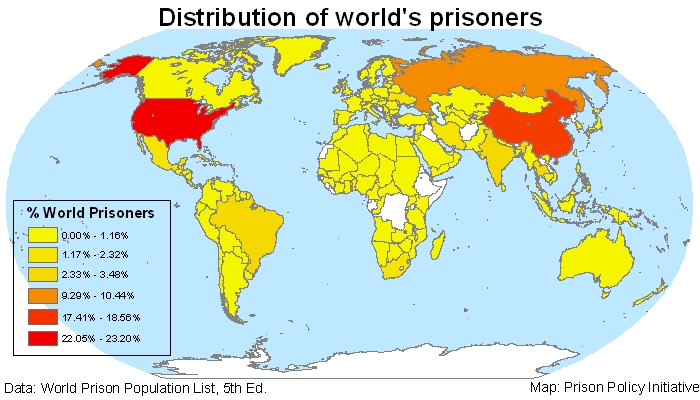
Statistics as of June 30, 2010 and December 31, 2010 from Correctional Population in the United States and we calculated the incarceration rates by race with additional data from the U.S. Census. All references to Blacks and Whites are for what the Bureau of Justice Statistics and U.S. Census refer to as “non-Hispanic Blacks” and “non-Hispanic Whites”.)



